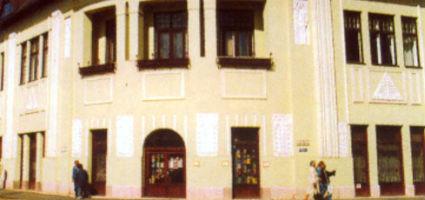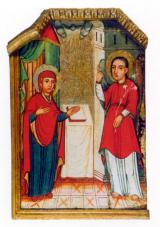2024. April 26. Friday
Greek Catholic Art Collection - Nyíregyháza
 |
Address: 4400, Nyíregyháza Bethlen Gábor utca 5.
Phone number: (42) 500-028, (42) 415-903
Opening hours: Mon-Fri 8-16
(Closed on religious holidays) |
The Orthodox Catholic Ecclesiastic Collection was formed by county bishop dr. Imre Timkó in 1983. The purpose of the collection is to systematically collect, file and exhibit the historic and arts relics of the Hungarian orthodox Catholicism.
The collection consists of icons, liturgy equippments, textiles, gospel books and goldsmith materials. The collection of the relics is still continued today.
In 1996 relics of the collection and items borrowed form the Orthodox Catholic Church were exhibited in the Jósa András Museum of Nyíregyháza, under the title of Icon and Liturgy.
Our new permanent exhibition was opened on 7th May 2000, in an air-conditioned hall equipped with all necessary security devices. The title of the exhibition is: The artistic values of the Hungarian Orthodox Catholic Church in the 18-20 centuries. The exhibition was arranged by Dr. Bernadett Puskás arts historian and opened by archbishop Mons. Francesco Marchisano.
Tourists, school aged young people, pansioners and believers coming on a pilgrimage visit our collection.
László Dudás director
The collection consists of icons, liturgy equippments, textiles, gospel books and goldsmith materials. The collection of the relics is still continued today.
In 1996 relics of the collection and items borrowed form the Orthodox Catholic Church were exhibited in the Jósa András Museum of Nyíregyháza, under the title of Icon and Liturgy.
Our new permanent exhibition was opened on 7th May 2000, in an air-conditioned hall equipped with all necessary security devices. The title of the exhibition is: The artistic values of the Hungarian Orthodox Catholic Church in the 18-20 centuries. The exhibition was arranged by Dr. Bernadett Puskás arts historian and opened by archbishop Mons. Francesco Marchisano.
Tourists, school aged young people, pansioners and believers coming on a pilgrimage visit our collection.
László Dudás director
